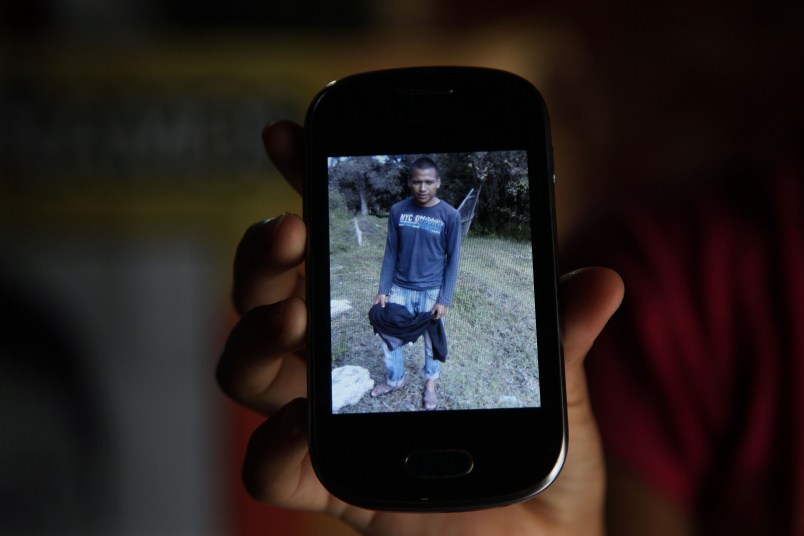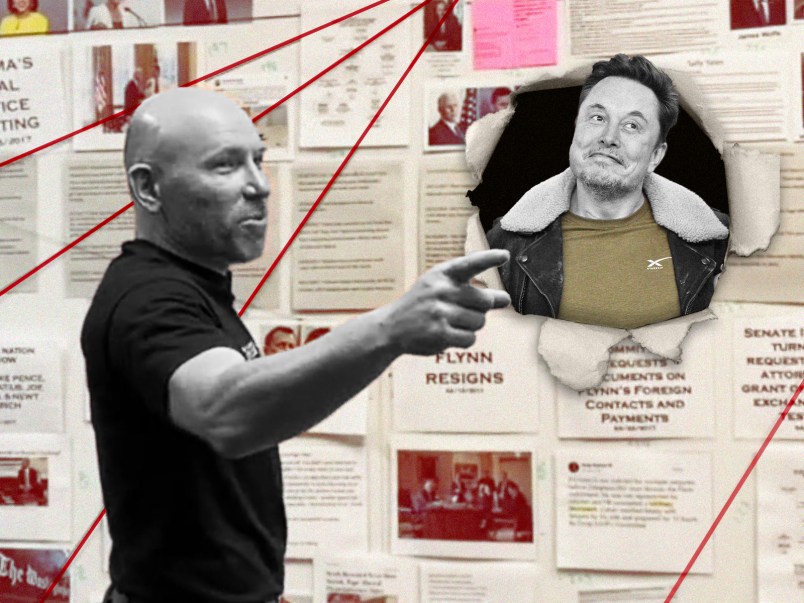TIXTLA, Mexico (AP) — Maria Telumbre knows fire. She spends her days making tortillas over hot coals, and experience tells her a small goat takes at least four hours to cook. So she refuses to believe the government’s explanation that gang thugs incinerated her son and 42 other missing college students in a giant funeral pyre in less than a day, leaving almost nothing to identify them.
The discovery of charred teeth and bone fragments offers Telumbre no more proof of her son’s death than did the many graves unearthed in Guerrero state since the students disappeared Sept. 26. She simply does not accept that the ashes belong to her 19-year-old son and his classmates.
“How is it possible that in 15 hours they burned so many boys, put them in a bag and threw them into the river?” Telumbre says. “This is impossible. As parents, we don’t believe it’s them.”
For Telumbre, her husband, Clemente Rodriguez, and other parents, the official account is merely another lie from an administration that wants to put this mess behind it. Their demands for the truth are fuelling national outrage at the government’s inability to confront the brutality of drug cartels, corruption and impunity.
The Rodriguez family’s chronicle of disbelief is rooted in collusion between Mexican officials and organized crime. The students of the Rural Normal School of Ayotzinapa were last seen in the custody of police in the city of Iguala, allegedly at the behest of the mayor. Soldiers didn’t respond to the parents’ appeals for help. Federal officials waited 10 days before intervening. And then, parents say, they focused on finding graves rather than live students, so only graves were found.
“They are hidden somewhere,” insists Clemente Rodriguez. “I hope that they’re going to let them go any day now.”
Guerrero is a rough state with an economy fed by cultivation of heroin and marijuana. Far from the tourist resorts of Acapulco and Ixtapa, the Rodriguez family lives in a farming enclave near the school in Ayotzinapa. Rodriguez delivers bottled water for a living, and Telumbre sells tortillas she makes on an outdoor stove.
Their son Christian wanted an education to help support the family and hoped to study agronomy at a university. But his parents didn’t have the money, so his only option was the tuition-free teacher’s college, known for Spartan living and radical politics. Fundraising activities might include taking over highway tollbooths or commandeering buses to go to demonstrations.
On Sept. 26, Telumbre and Rodriguez received a late-night call from their daughter and rushed to the school. There they were told that dozens of students had gone to Iguala to raise money, and police had attacked their buses.
Details slowly trickled in: Christian was part of the group; a student was shot in the head; three students and three bystanders were dead; one of the dead was found by a roadside with his face flayed and eyes gouged out.
Rodriguez set out for Iguala with about 10 parents. Their first stop was the federal prosecutor’s office. They had to force their way in, but officials said they had no information.
City police also insisted they knew nothing.
It turned out that federal authorities were holding a few students. They were released that evening, but Christian wasn’t among them.
The parents searched in hospitals, at city hall and on the local military base. They chased leads that took them to caves and an abandoned hacienda where the students were rumored to be held by a drug gang.
State officials arrested 22 Iguala police in connection with the bus shooting, and announced they were searching for43 students. Mayor Jose Luis Abarca went on the run with his wife, Maria Angeles Pineda.
Still, there was no news on Christian.
Eight days after the students disappeared, federal officials announced more arrests and said suspects had led them to hidden graves on a slope outside Iguala where 28 bodies were discovered. None matched those of the students.
Ten days after the disappearance, President Pena Enrique Nieto announced that he would send federal forces to “find out what happened and apply the full extent of the law.”
Over time, 10,000 federal agents and dozens of forensics investigators joined the search. A reward of 1.5 million pesos (about $112,000) was offered for information on the students. More arrests were made, 76 in all.
Still, no students.
On Oct. 22, Attorney General Jesus Murillo Karam announced that Mayor Abarca had ordered police to intercept the students in Iguala so they wouldn’t interrupt a speech by his wife.
Finally, last Friday, Murillo Karam went on national television to give a detailed account, based on interviews with suspects:
The youths were hauled to the neighboring town of Cocula in dump trucks, so tightly packed that 15 died by suffocating on the way. The rest were killed there, and the bodies were piled like cordwood on a pyre that burned for 15 hours, then were pulverized, bagged and tossed into a river.
Authorities said degradation of the remains made it difficult to extract DNA for identification.
So they remains were sent to a laboratory in Austria, seeking scientific results that might allow Telumbre and Rodriguez to finally accept the death of their son.
___
Associated Press writers Mark Stevenson and Jacobo G. Garcia in Tixtla contributed to this report.
Copyright 2014 The Associated Press. All rights reserved. This material may not be published, broadcast, rewritten or redistributed.









